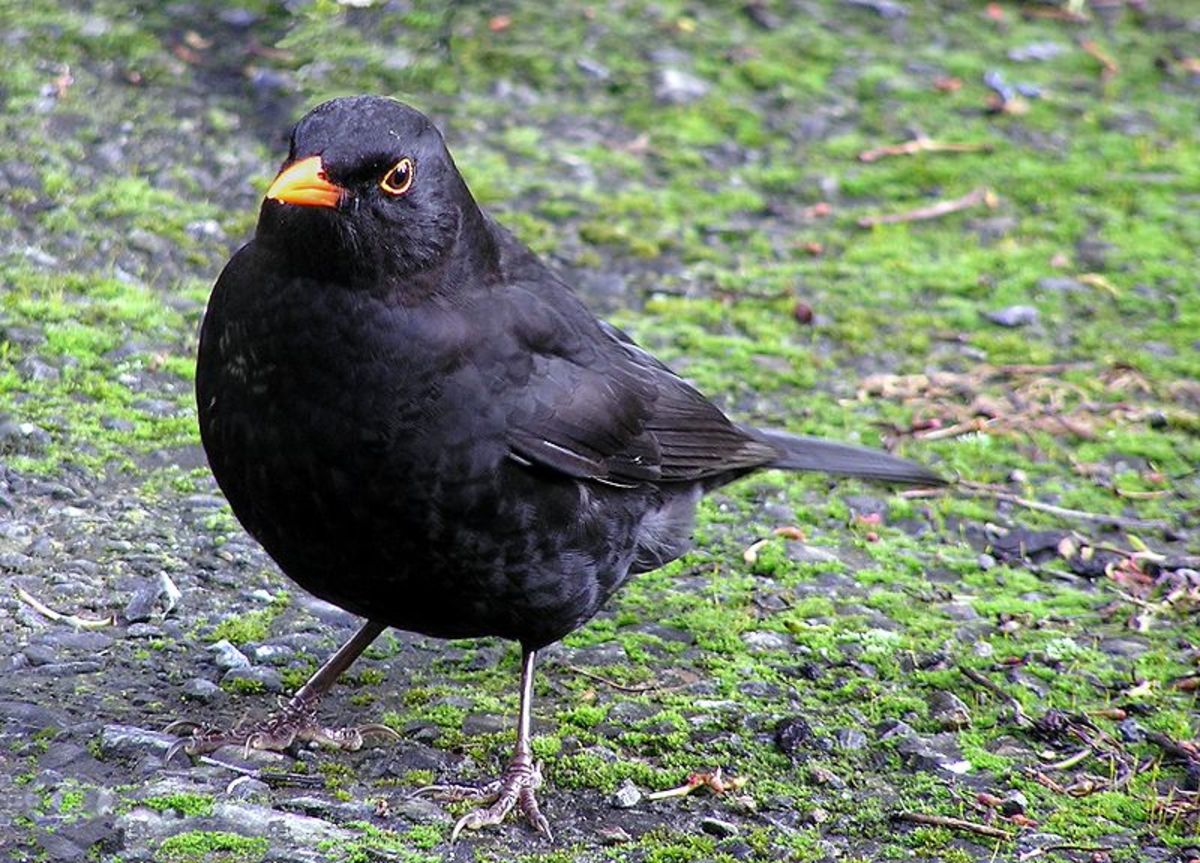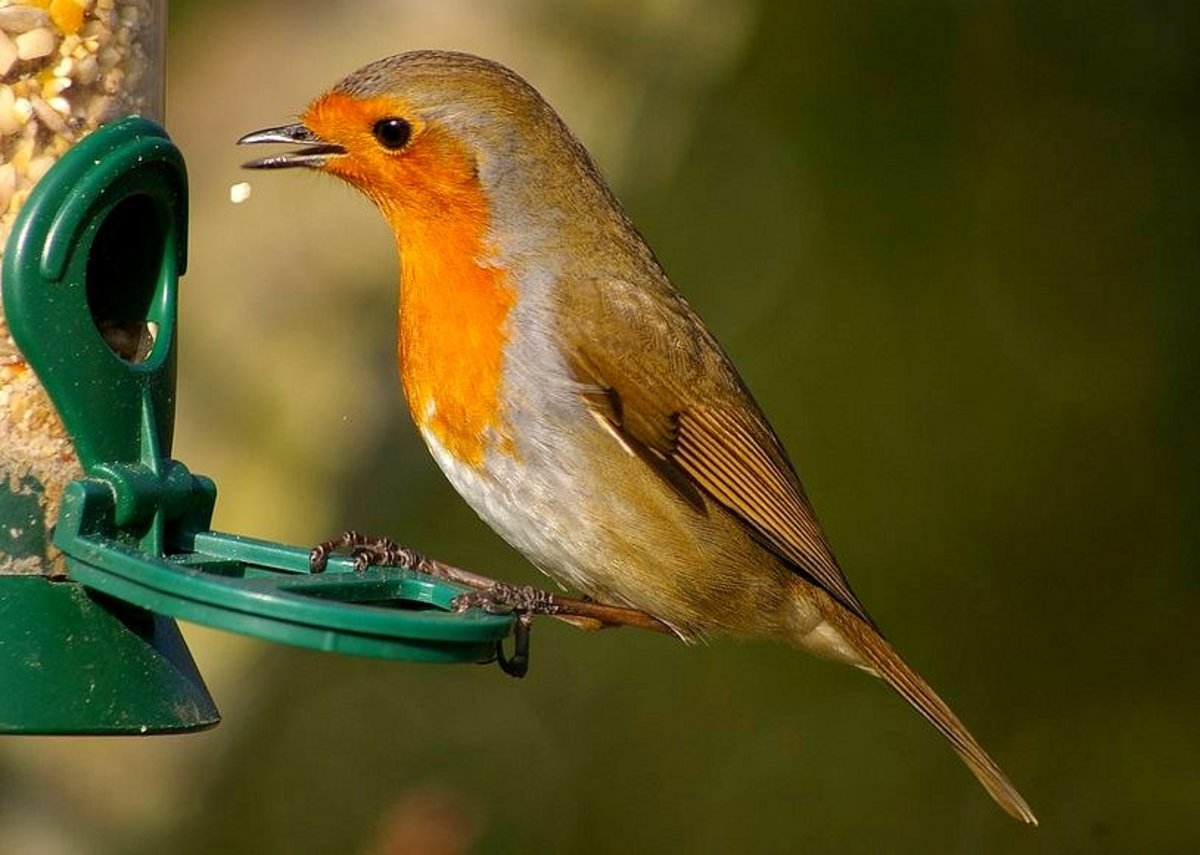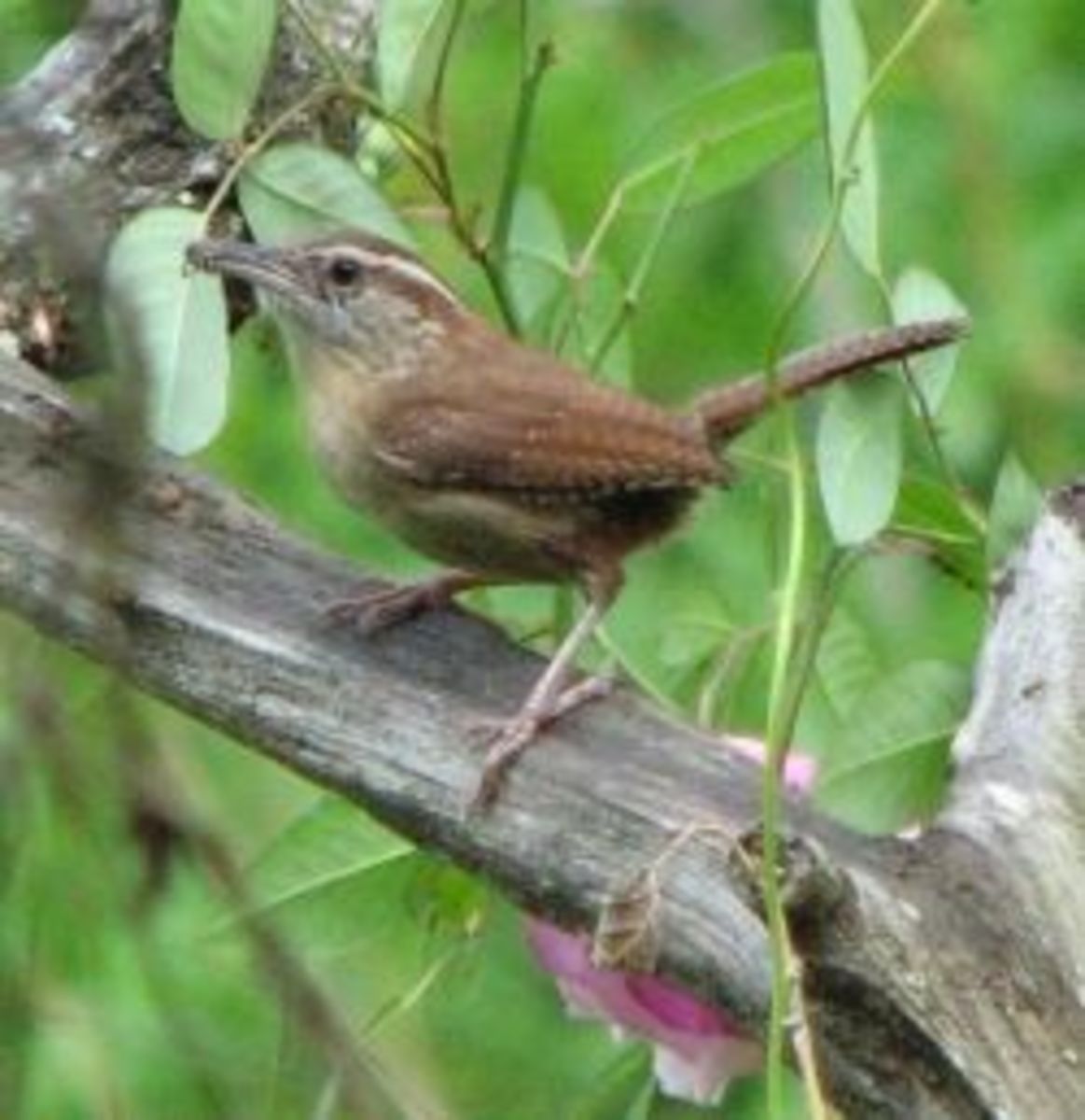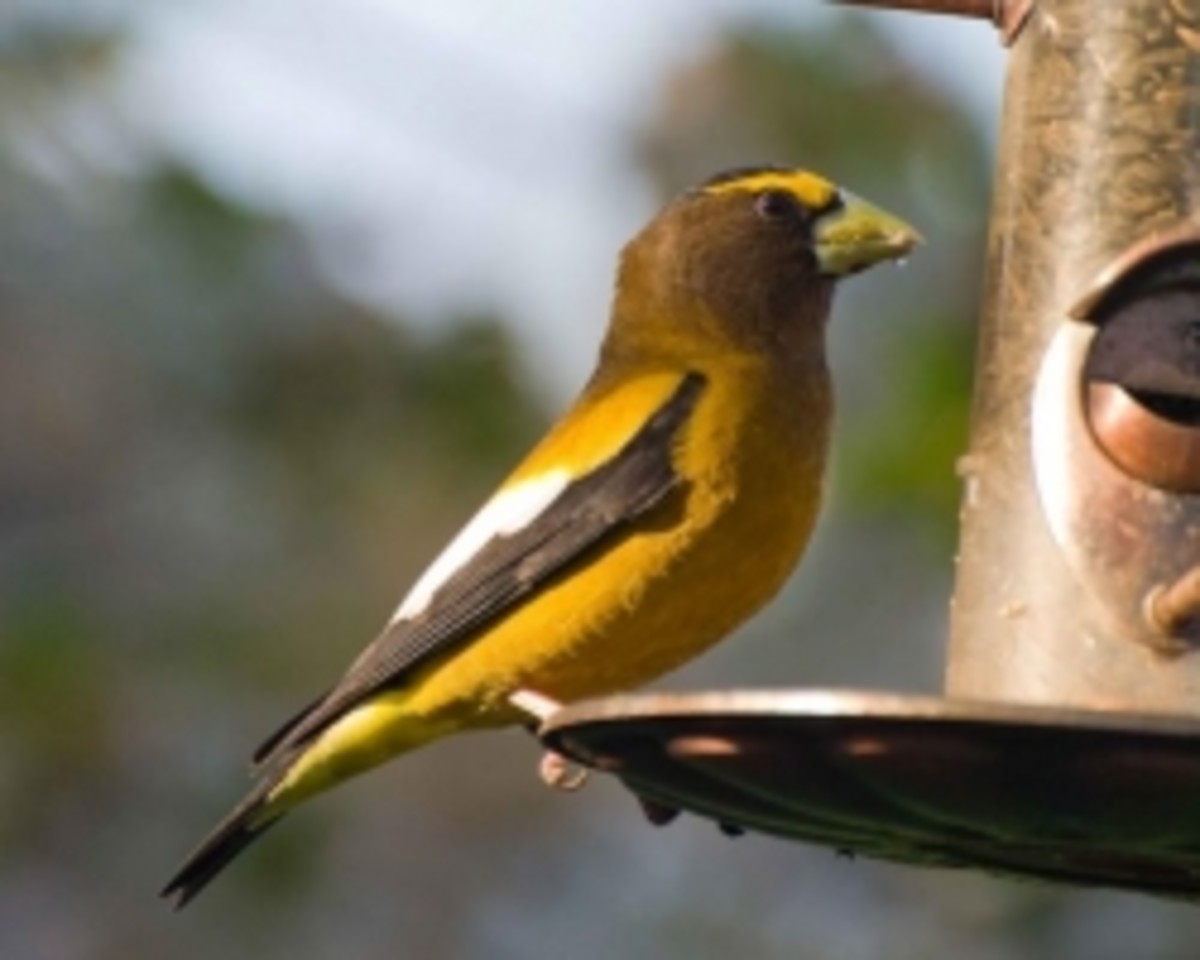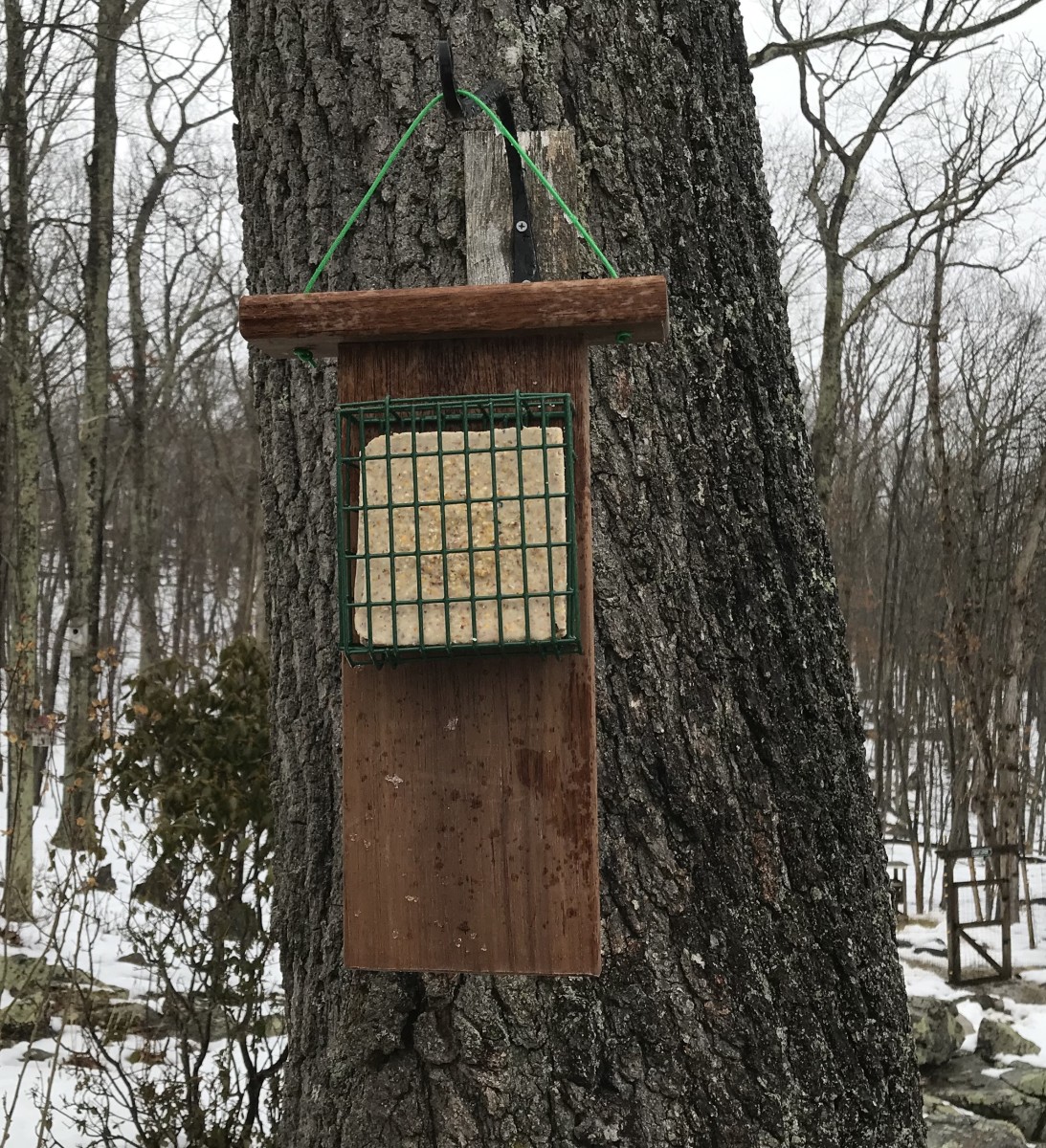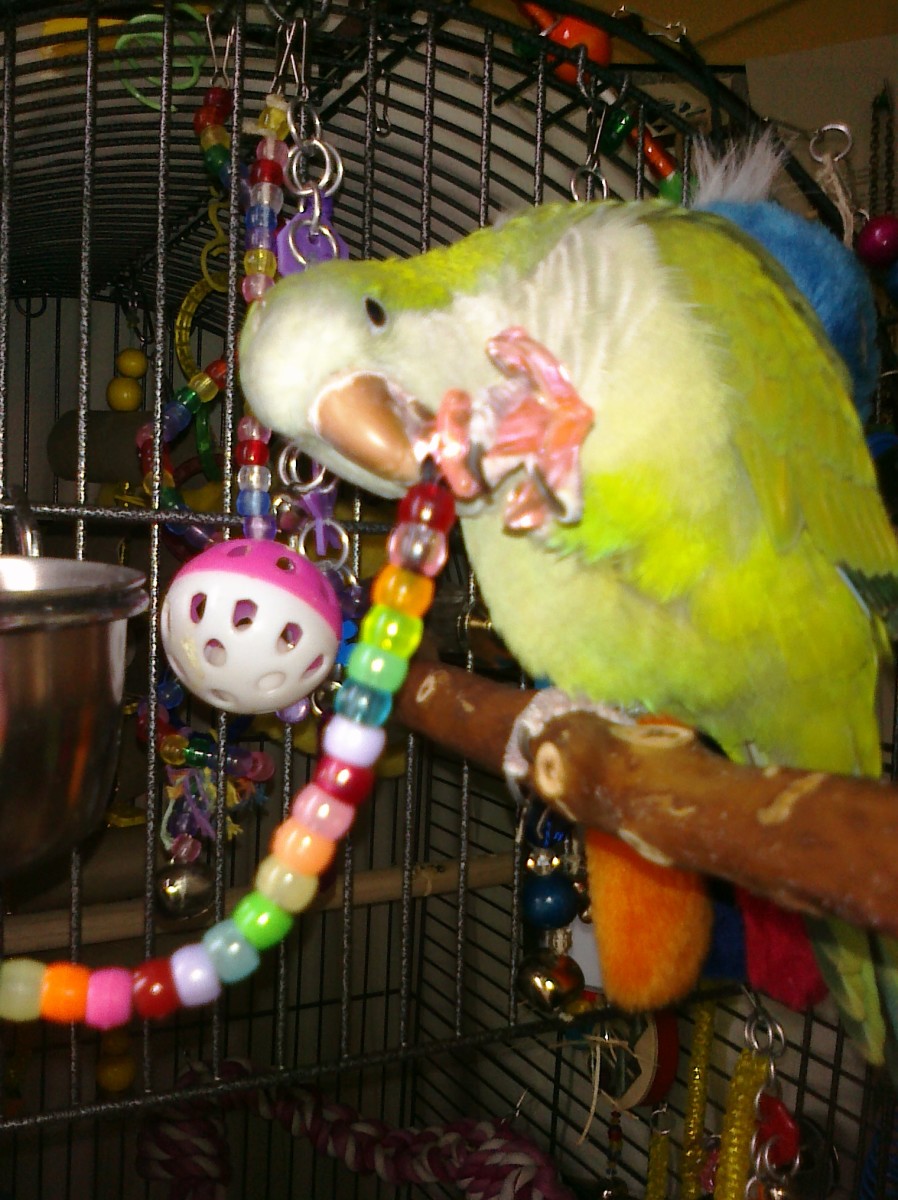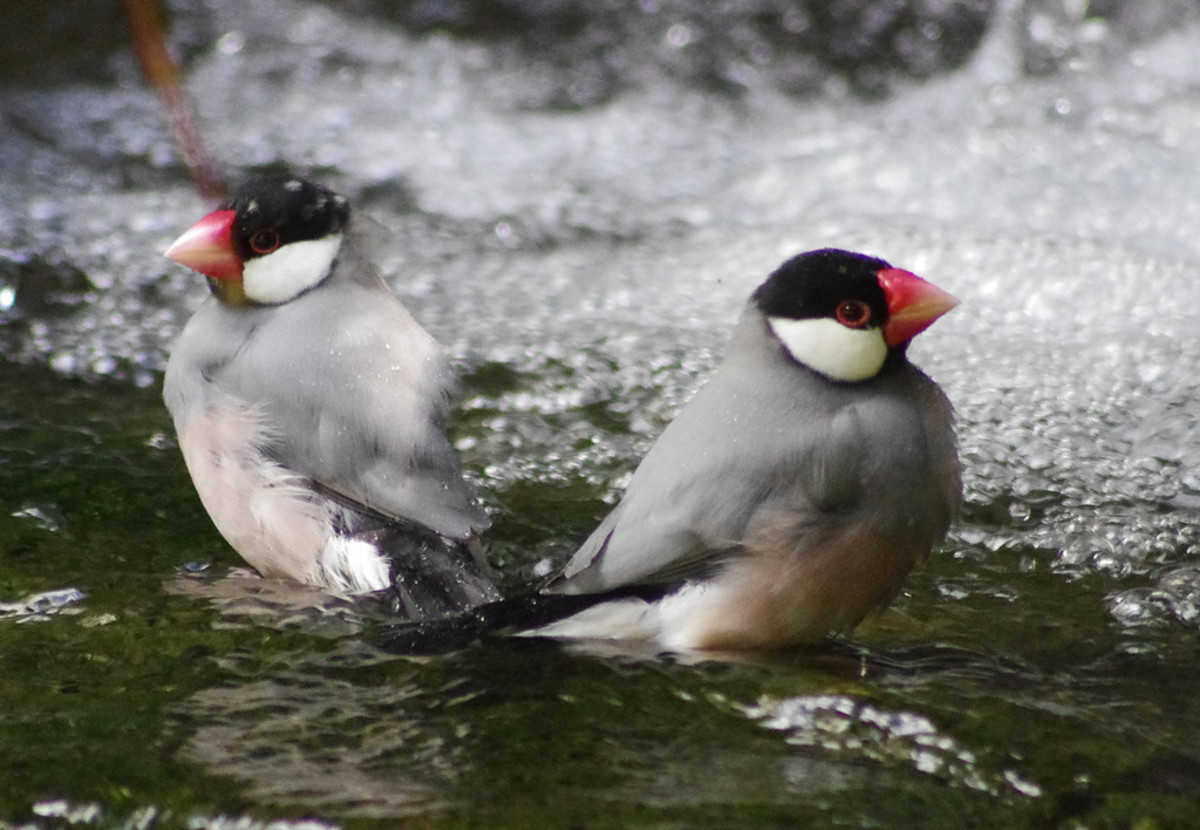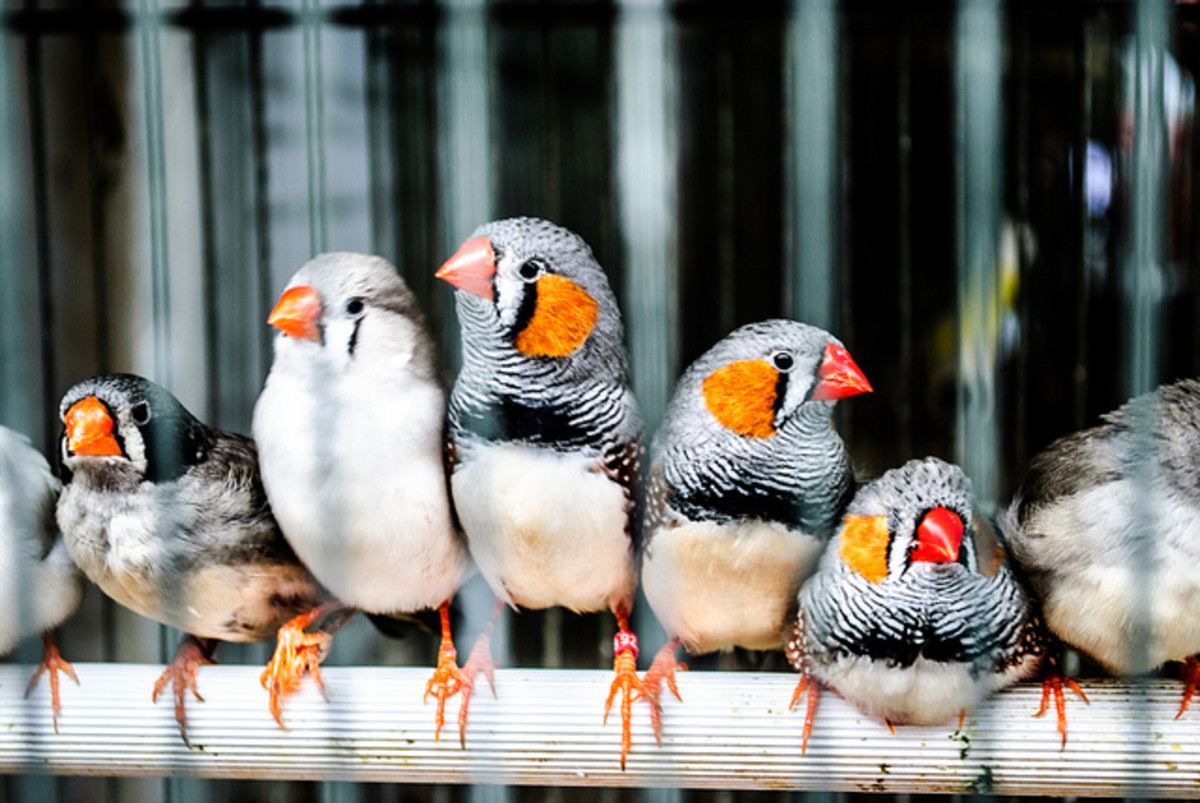Make Your Own Bird Feeders
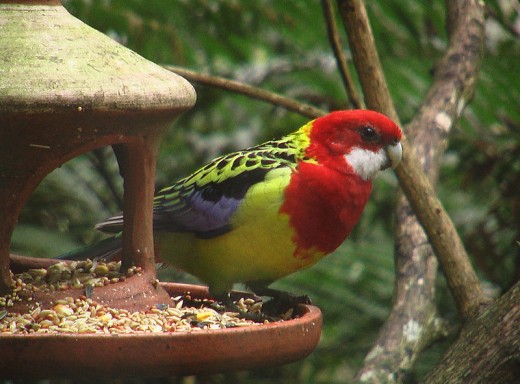
As a nature photographer I have lost my share of good shots simply because I was either too far away, the subject was not in a good pose or one of several excuses.
Photographing birds is also one of my hobbies since they really make for very entertaining and photogenic subjects and their images are always sought after.
In the part of the country where I happen to reside, Miami Florida, there are quite a number of bird species that live here year round as well as many other species that often visit during the winter times.
I wanted to make it easier for me to capture their images without having to take a long trip and stake locations for hours on end. It then seemed naturally to use any of the many methods to attract them to my particular location, in this case being my home.
The first thing that I did was to research the various food that these species like, including the visiting ones. Seeds off course are very popular, with sunflower being among the favorites. Then there was a creation involving seeds, peanut butter, netting and fat which is often called suet. This is often preferred by several varieties of woodpeckers as well as smaller birds.
This last one I found to be more long lasting than just loose seeds as there is less waste and I can usually isolate one single bird at a time in which to concentrate when photographing them. Suet is not that hard to make at home, but I have found it often to be cheaper to buy pre-made.
"Suet /ˈsʲuːɨt/ is raw beef or mutton fat, especially the hard fat found around the loins and kidneys....Bird feed is commonly used in the form of cakes of suet, which can be made with other solid fats, such as lard. Rolled oats, bird seed, cornmeal, raisins, and unsalted nuts are often incorporated into the suet cakes.[4] Wikipedia
A quick DIY method for a bird feeder is to take some fat from your local butcher's shop and melt it over a slow flame, you can add peanut butter if you wish. Melting the fat is called rendering , and this process is what makes it from spoiling like a regular piece of meat would do if kept out of the cold.
Adding coarse cornmeal or flour while the fat is still liquid or even seeds, makes for a tastier suet. After melting the fat/peanut butter, place the melted mixture into a mold and let cool. Once cool you may cut it, chop it or hang as one piece. Birds will readily seek it.
Whatever method you use just ensure that the feeder is in a safe location away from possible predators, and yes, this includes you cats, dogs if you have any as well as the neighbors.
My preferred bird feeder is a simple clay plate much like the ones used at the base of many planters to collect excess water. I drill three to four holes and attach either string or fine wire and attach the ends to a large key ring which is used to hang the feeder from a tree branch.
if you want to keep squirrels and mice out of the feeder then adding a piece of PVC plastic tubing through which you insert the string or fine wire will usually not allow the critters to slide unto the seed plate because the tubing will spin, but this is not a guarantee. However much easier is to attach a metal plate, aluminum is best, to the top end of the string or wire that is used to secure the feeder to the tree branch.
Another simple method is to take strong wire or string, run it from tree branch to tree branch, like stringing a hammock. Put a piece of PVC in the middle, make sure that is is loose fitting. Hang your feeder from the string and this should be enough to keep unwanted pests from reaching it, provided that it is high enough from the ground.
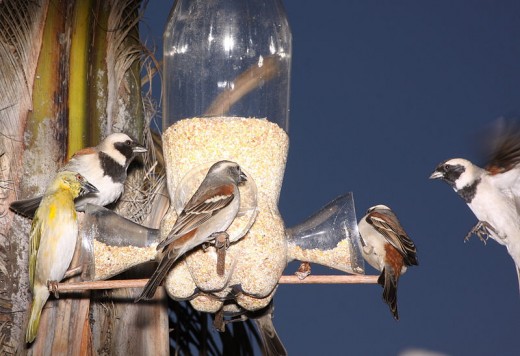
Once you have your bird feeder in place, then you should set up approximately 20 feet away in a concealed spot and pre- focus on the feeder so that you do not waste time once the subjects arrive. A good zoom or telephoto lens in the range of about 100 to 200m should be sufficient.
If you want to set up closer then you should have a tent,preferably one that has camo paint or designs set this up about one hour prior to the bird's arrival so that they can get used to seeing it.
Do not make sudden movements once you start shooting your images. Just finalize the focusing and press the shutter button. It is best to take several snaps at once and a quick camera / lens set up is important.
If the feeder is shadowed by leaves or vegetation, then consider using a fast charging flash unit. Keep the lens aperture at its largest size. This will allow the most possible light to enter the film or digital sensor plane and will eliminate most background elements which can be a distraction.
Be attentive to any branches or leaves that may show up on the final image so crop on the go and do so judiciously to maximize the focus on the subjects themselves.
- 4. Porcelain Parasol - 12 Beautiful DIY Bird Feeders ... | All Women Stalk
How adorable! I love that Erin made this bird feeder using a pretty bowl and plate. If you can make yours with fun patterns, too, that would be fantastic. Aside from the plate and bowl, you will also need washers, nuts, glue, and an eye bolt.
© 2012 Luis E Gonzalez



